On too many farms across Northern Ireland, there is a reactionary approach to animal health. Trying to cut costs by reducing the number of worming treatments cattle receive is a false economy. It inevitably ends up costing you more money in lost animal performance.
The same can be said for not vaccinating against pneumonia, IBR or scour when there is a history of such problems on farm. There is no substitute for good planning. But you also have to follow the plan to make it work. Routinely dosing cattle at the correct time of year, or vaccinating animals ahead of high-risk periods is essential if you wish to improve animal health.
All of the programme farmers have a health plan. These plans are simple to follow, so that they are effective. They outline when and what products will be used on the herd to cover cattle for disease and parasites throughout the year.
To get away from the reactionary element of animal health, the programme farmers also investigate the cause of all health problems on farm. Nutrition and housing management can affect health and performance as much as any disease can.
Faecal egg counts have been used to good effect on the farms to determine if worm or fluke drenches are working, or if a follow-up dose is required as has been the case on some programme farms.
Pre-calving minerals
With spring-calving approaching, pre-calving minerals will be introduced and vaccination against scour will be carried out in the coming weeks. But, as always, vaccination works best when combined with best practice.
Hygiene in the calving house, ensuring calves get adequate colostrum within the first six hours post-calving and clean dry bedding are also required to make vaccination more effective.
Breeding for autumn calving is coming to an end and will be completed by the end of the month.All spring and early summer-calving herds have all calves weaned.Programme farms are regularly monitoring performance in young stock by weighing, particularly where high input intensive feeding is taking place, eg bull-beef finishing.The remainder of the 2015 spring-born steers and heifers will be finished over the next month.My spring herd is due to calve from mid-March through to the end of May next year. There are two cull cows to be finished by the end of this month, which will leave me with 72 cows and 15 replacement heifers to calve next spring. Cull cows were identified much earlier this year, which has saved on meal and silage requirements for fattening these animals.
The cows are in-calf to a Charolais and two Simmental stock bulls. The replacement heifers were artificially inseminated over a six-week period. Most heifers are Simmental-bred and were inseminated with a Limousin bull, Millgate Judge. My suckler herd is now dominated by Simmental genetics, which have served me well to date. However, to get the benefits from hybrid vigour, I am now keen to introduce more Limousin genetics into the herd.
Dry cows have been sorted based on the calving date. Thin cows have been penned separately for additional feeding. They are being fed average quality silage (67 D-value) on an ad-lib basis, as are my in-calf heifers. Cows weaned in good body condition are having silage restricted at present.
Spring-born weanlings
Our spring-born calves have been gradually weaned throughout the autumn. The oldest calves were weaned at grass back in September. The youngest calves were weaned over the past few weeks. With limited slatted housing available, calves are all on straw bedding with the cows penned on slats. All calves are being fed ad-lib round bales of silage (68 D-value) supplemented with a 16% grower ration. Male calves which were castrated are getting 2.5kg/day with heifers being fed 2kg/day.
Similar to last year, I have a good range of heifers to choose as replacements next year. We will monitor performance in early January to see if any reduction in meal feeding can be made in preparation for turnout next spring.
Autumn herd management
A big spring herd can take up a lot of time, so to spread the workload on farm this was the first year that I have had a group of cows calving over August and September.
The autumn herd has reduced labour in spring and making better use out of some of the poorer land I am farming, while maintaining the farm stocking rate.
There were 24 heifers calved this autumn that had been held over form the spring-calving herd. They calved at 28 to 30 months and, as a result, the heifers have got very big.
Despite being grazed tightly during the summer, they have grown much bigger than their comrades calved at 24 months.
All are housed and being fed 2.5kg/day of meal to maintain body condition and milk production. Their calves have access to a straw-bedded creep area and are being offered 1kg/day of the 16% grower blend.
The autumn cows are being served with the Charolais stock bull, which will be removed by the end of December to maintain a tight calving pattern.
Replacement heifers for
the autumn herd
Next year, I will be able to select autumn-born heifers for replacements and move to 24-month calving. Until then, the replacements for the autumn herd will all be a carryover from the spring-calving group.
There are 21 heifers available which have been running with an Angus bull since mid-October. He will be removed on 20 December with any heifers that are not in calf fattened.
My target is to settle at 35 autumn-calving cows.
Along with the 24 heifers that calved this year, I should get enough females from the group of 21 heifers currently being served to meet this target number.
All cattle were dosed at the point of housing using an ivermectin wormer. This included cows. In the past, cows were not always covered for worms. But as a result of carrying a high-grazing stocking rate, I think this is now worthwhile.
Weather conditions have increased the risk of pneumonia over the past month but, thankfully, I have not had any issues. Although vaccination is a help, in my experience, it still isn’t a cure for poor management.
My management of younger stock has certainly improved over the past few years, which in turn has helped reduce all animal health issues including pneumonia.
I think keeping up to date with worming and improving the management of the weaning process has been a good help. So too has been the reduction in purchased animals and ensuring that cattle are settled in groups well in advance of housing. My next routine health treatment is for fluke. All cattle will be dosed using Trodax in late December.
On too many farms across Northern Ireland, there is a reactionary approach to animal health. Trying to cut costs by reducing the number of worming treatments cattle receive is a false economy. It inevitably ends up costing you more money in lost animal performance.
The same can be said for not vaccinating against pneumonia, IBR or scour when there is a history of such problems on farm. There is no substitute for good planning. But you also have to follow the plan to make it work. Routinely dosing cattle at the correct time of year, or vaccinating animals ahead of high-risk periods is essential if you wish to improve animal health.
All of the programme farmers have a health plan. These plans are simple to follow, so that they are effective. They outline when and what products will be used on the herd to cover cattle for disease and parasites throughout the year.
To get away from the reactionary element of animal health, the programme farmers also investigate the cause of all health problems on farm. Nutrition and housing management can affect health and performance as much as any disease can.
Faecal egg counts have been used to good effect on the farms to determine if worm or fluke drenches are working, or if a follow-up dose is required as has been the case on some programme farms.
Pre-calving minerals
With spring-calving approaching, pre-calving minerals will be introduced and vaccination against scour will be carried out in the coming weeks. But, as always, vaccination works best when combined with best practice.
Hygiene in the calving house, ensuring calves get adequate colostrum within the first six hours post-calving and clean dry bedding are also required to make vaccination more effective.
Breeding for autumn calving is coming to an end and will be completed by the end of the month.All spring and early summer-calving herds have all calves weaned.Programme farms are regularly monitoring performance in young stock by weighing, particularly where high input intensive feeding is taking place, eg bull-beef finishing.The remainder of the 2015 spring-born steers and heifers will be finished over the next month.My spring herd is due to calve from mid-March through to the end of May next year. There are two cull cows to be finished by the end of this month, which will leave me with 72 cows and 15 replacement heifers to calve next spring. Cull cows were identified much earlier this year, which has saved on meal and silage requirements for fattening these animals.
The cows are in-calf to a Charolais and two Simmental stock bulls. The replacement heifers were artificially inseminated over a six-week period. Most heifers are Simmental-bred and were inseminated with a Limousin bull, Millgate Judge. My suckler herd is now dominated by Simmental genetics, which have served me well to date. However, to get the benefits from hybrid vigour, I am now keen to introduce more Limousin genetics into the herd.
Dry cows have been sorted based on the calving date. Thin cows have been penned separately for additional feeding. They are being fed average quality silage (67 D-value) on an ad-lib basis, as are my in-calf heifers. Cows weaned in good body condition are having silage restricted at present.
Spring-born weanlings
Our spring-born calves have been gradually weaned throughout the autumn. The oldest calves were weaned at grass back in September. The youngest calves were weaned over the past few weeks. With limited slatted housing available, calves are all on straw bedding with the cows penned on slats. All calves are being fed ad-lib round bales of silage (68 D-value) supplemented with a 16% grower ration. Male calves which were castrated are getting 2.5kg/day with heifers being fed 2kg/day.
Similar to last year, I have a good range of heifers to choose as replacements next year. We will monitor performance in early January to see if any reduction in meal feeding can be made in preparation for turnout next spring.
Autumn herd management
A big spring herd can take up a lot of time, so to spread the workload on farm this was the first year that I have had a group of cows calving over August and September.
The autumn herd has reduced labour in spring and making better use out of some of the poorer land I am farming, while maintaining the farm stocking rate.
There were 24 heifers calved this autumn that had been held over form the spring-calving herd. They calved at 28 to 30 months and, as a result, the heifers have got very big.
Despite being grazed tightly during the summer, they have grown much bigger than their comrades calved at 24 months.
All are housed and being fed 2.5kg/day of meal to maintain body condition and milk production. Their calves have access to a straw-bedded creep area and are being offered 1kg/day of the 16% grower blend.
The autumn cows are being served with the Charolais stock bull, which will be removed by the end of December to maintain a tight calving pattern.
Replacement heifers for
the autumn herd
Next year, I will be able to select autumn-born heifers for replacements and move to 24-month calving. Until then, the replacements for the autumn herd will all be a carryover from the spring-calving group.
There are 21 heifers available which have been running with an Angus bull since mid-October. He will be removed on 20 December with any heifers that are not in calf fattened.
My target is to settle at 35 autumn-calving cows.
Along with the 24 heifers that calved this year, I should get enough females from the group of 21 heifers currently being served to meet this target number.
All cattle were dosed at the point of housing using an ivermectin wormer. This included cows. In the past, cows were not always covered for worms. But as a result of carrying a high-grazing stocking rate, I think this is now worthwhile.
Weather conditions have increased the risk of pneumonia over the past month but, thankfully, I have not had any issues. Although vaccination is a help, in my experience, it still isn’t a cure for poor management.
My management of younger stock has certainly improved over the past few years, which in turn has helped reduce all animal health issues including pneumonia.
I think keeping up to date with worming and improving the management of the weaning process has been a good help. So too has been the reduction in purchased animals and ensuring that cattle are settled in groups well in advance of housing. My next routine health treatment is for fluke. All cattle will be dosed using Trodax in late December.



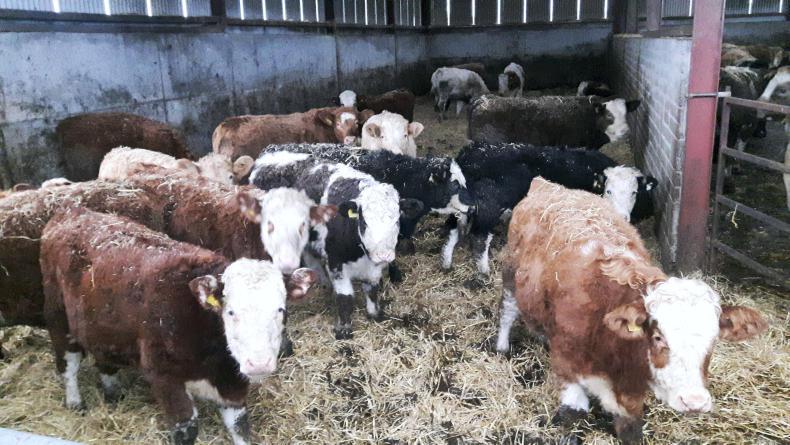

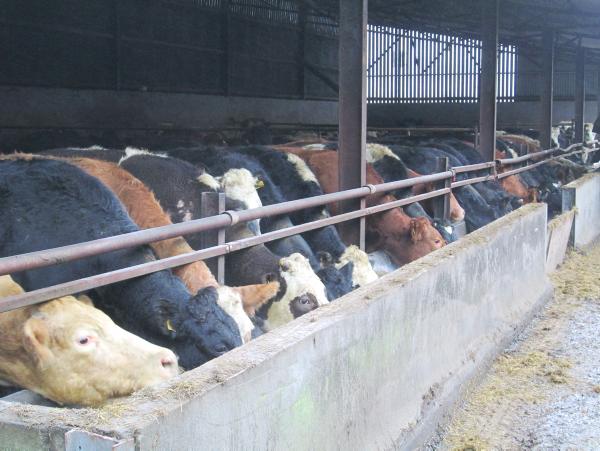

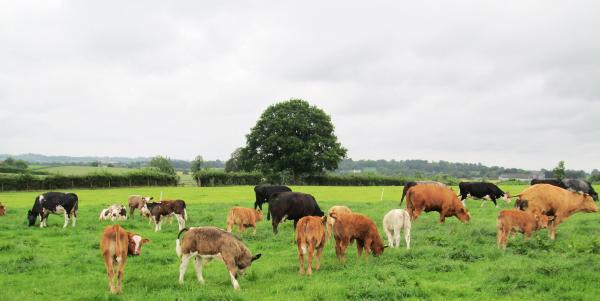
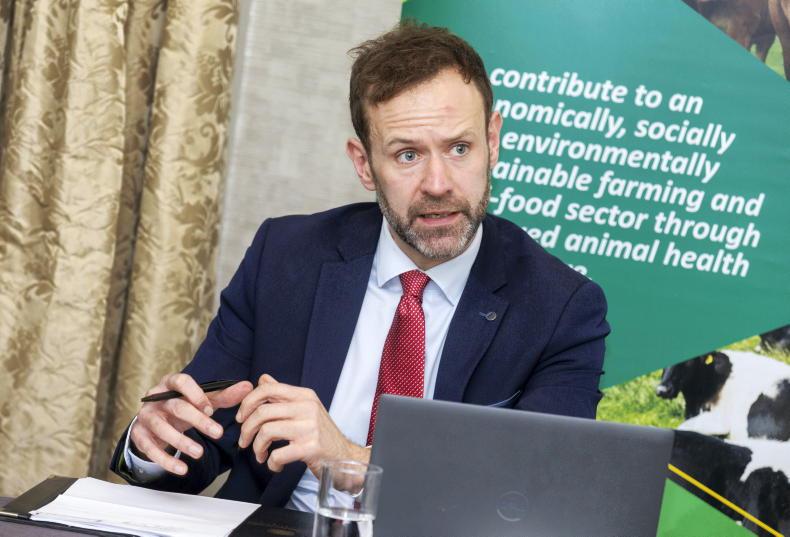
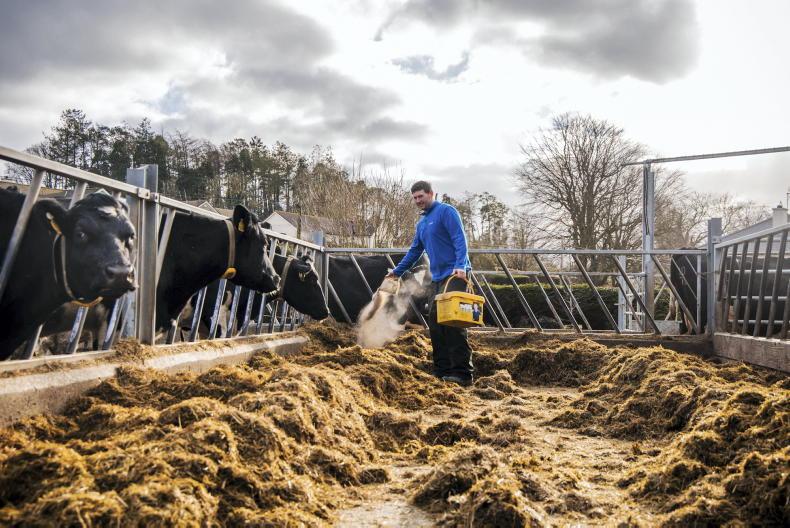
SHARING OPTIONS